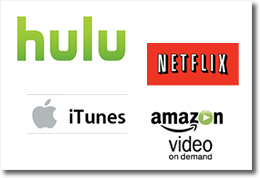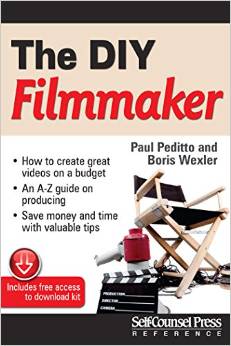Might be pure laziness, but looking around for a blog topic this week it occurred to me that when I closed down my class at Columbia College entitled SURVIVING OUTSIDE HOLLYWOOD I had put together a pretty damn good list of micro-budget filmmaking and digital information sources. It would be a shame to see those links go away, so here are a few of them, Part 1 of the series …submitted for your approval:
- TED HOPE
I’ve talked about Ted’s blog, found here. Here’s a segment from his article entitled “Good Machine No-Budget Commandments.
1. Write to direct. A screenplay, especially a no-budget screenplay is a very loose blueprint for a film – ultimately every choice you make will compromise something else.
2. Write for what you know and for what you can obtain. This goes for actors, locations, animals, and major propping or set dressing. If your friend owns something, anything, write it into the film.
3. Remain flexible. Recognize the essential element in a scene and allow it to take place in a variety of locations or circumstances.
4. Choose an aesthetic that will capitalize on the lack of money (i.e. period anachronisms, monochromatic color schemes, etc.). Invest meaning in everyday commonplace things – make an orange a totemic object John Ford would be proud of.
5. Don’t over strive. Don’t try to show how much production value you have (you don’t have it, so you’ll either fail or unbalance your film). A film that people say is “well produced” usually means that the story didn’t have much going for it. Keep the story aligned with the budget.
6. Don’t limit yourself to too few locations – it’s a dead give away of lack of dollars. I like the number eight.
7. Use everything more than once. You’ve already paid for it, so use it, use it, use it.
8. Write for a very limited audience – your closest friends. Do not try to please anyone – crowd pleasing costs.
9. Write to cut it back later. You can trim to subtlety.
10. Contradict the above commandment and only write what you know you absolutely must shoot.
11. Keep it simple. You can learn how to do the impossible on your next film. No dogs. No babies. “Business” is expensive. Keep it controllable.
12. Keep it intimate. Dialogue and close ups are cheap.
13. Make the most of a day’s work. It’s easier to get a commitment for one day than it is for a week. Exploit people’s willingness to give a day.
14. Ignore everything listed above if it doesn’t further the story.
- CHRIS JONES
Also only great is the Chris Jones blog. Here’s a snippet from an article entitled: “Five Misunderstandings About Self-Distribution That Can Screw Up Your Movie.”:
1. “I don’t want to self distribute”
Self distribution is not self distribution. It is not DIY. I am known as the “DIY guy” because I wrote a manual to help filmmakers distribute their films. However in that book I stress that distribution and marketing is about collaboration and partnerships. I prefer the term Hybrid Distribution. You as the filmmaker manage the process but you engage various entities to do much of the actual distribution for you: digital aggregators, DVD companies, online shopping carts, fulfillment companies, television broadcasters, bookers, publicists.
This still involves work – but not as much as doing everything yourself, which I only recommend as a fallback. Partnering with companies extends your reach tremendously and there are more and more companies forming every month for you to help you. American: The Bill Hicks Story is a wonderful UK example of this http://www.americanthemovie.com.
2. “I don’t need to worry about distribution – a company will buy my film and do that for me.”
Unfortunately the world has changed. Estimates range that 35,000-50,000 new feature films are made every year. Less than 1,000 get onto the international festival circuit. And only 200 get into Sundance. Of those, last year only 20 made deals starting in the low six figures. If you multiply that by 5 sales markets worldwide, in a good year, 100 films out of 50,000 are making deals starting in the low 6 figures. All rights distribution deals don’t exist anymore except for the lucky few. This is part of the reason why the Sundance Institute started Sundance Artist Services (http://www.sundance.org/artistservices/), to help all of the films who had been in the Sundance Film Festival but never received distribution. Around the world broadcast licenses are decreasing and film fund revenues are shrinking. However the world rewards entrepreneurial spirit and creative energy.
- ED BURNS
Check out this link to a cool article from Ed Burns on the making of Nice Guy Johnny and his new movie, Newlyweds. Here’s a slice of it:
“Edward Burns is no stranger to the world of indie film. He launched his career with the $25,000 The Brothers McMullen at the Sundance Film Festival back in 1995, during the dark, pre-digital days of 16mm cameras and now-foreign concepts like optical houses and film prints.
In 2010, after seven larger-budget features as a writer-director, Burns returned to the low-budget arena with Nice Guy Johnny, which he made for roughly the same budget as The Brothers McMullen. Burns, who also produced and co-starred in the film, bypassed traditional distribution methods by releasing the film himself, first with a short festival tour and then with a simultaneous day-and-date rollout on VOD, DVD and Pay-Per-View.
Now Burns is taking this new model even further with Newlyweds, which he produced for a staggering $9,000 sum. His self-described “pseudo-documentary” relationship comedy premiered at the 2011 Tribeca Film Festival and has just been released in various digital formats…..
EB: “Obviously you have the freedom you don’t have in big-budget filmmaking, because you don’t have the guy who cuts the big check looking over your shoulder. Whether it’s somebody from the studio or just a private financier, no one is asking to know why, in the middle of the day, you’re deciding to scrap a scene or change a location. It allows you to be more nimble, more spontaneous. You free yourself from the traditional production shackles, which you need when you’re spending millions of dollars. When each production day costs you several hundred thousand dollars, you’re very accountable to what you get done. But in our case, we didn’t have to play by those rules.
As an actor, the great freedom comes when you’re shooting with such a small camera. Most days our cameraman was the only crew; there was no sound man, we were just wearing lavalier mics in a live environment, with no lights. You’re not slating anything. I’m not calling action or cut. So performance-wise, after the second or third take, you forgot you were making a film. At no point were there any of the triggers that might indicate to an actor, “Oh, I’m here on a set playing this part.” If you can make the filmmaking apparatus and environment disappear, you get much more realistic performances. And we were able to do that each and every day on Newlyweds.”
- NELSON CARVAJAL
My new friend—who happens to live in Logan Square, Chicago, US of A just as I do!—was good enough to wake up at some ungodly hour to speak in front of my Surviving Outside Hollywood class just last week. Nelson is in the DIY vanguard, and so is his blog, which you can check out here.
Here’s a fraction of what’s in his head on the subject of DIY filmmaking and digital distribution:
“I personally think that a cultural shift has in fact occurred. I feel that our audiences have gotten over their dependency on Hollywood’s model of big stars and big weekends. They have even lost their itch for the old independent model of festival-prestige titles getting their moment in the sun. Today’s audience is a tidal wave of new media brains that is far more complex to please. People are now connected to multiple physical and psychological platforms. From niche social outings to focused LinkedIn groups online, the new media individual is not phased by a flux of information or content. Thus, the new moviegoer is insanely sophisticated. In the 60s, Godard stopped the presses by abruptly introducing text on the screen. Today’s moviegoer is trained to watch a film on YouTube, disassociate the in-window advertisements and actively participate in the live comment feed beneath the streaming content. They sleep with an iPad or mobile device within arms reach. They are ready for aggressive content consumption.
And fellow filmmaker, you better bring it.”



